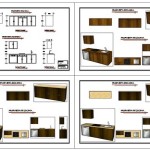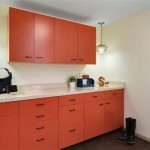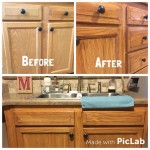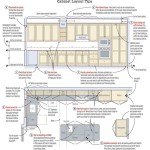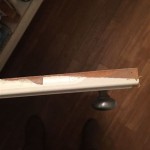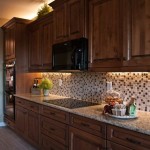How Much Do Kitchen Cabinets Cost To Replace?
Replacing kitchen cabinets represents a significant investment in any home renovation project. The cost can vary widely depending on numerous factors, making it crucial to understand the components that influence the final price. This article explores the various aspects of kitchen cabinet replacement costs, offering a comprehensive overview to help homeowners budget effectively and make informed decisions.
Kitchen cabinets form the foundation of a kitchen's functionality and aesthetic appeal. They provide storage space, define the layout, and contribute significantly to the overall ambiance. Over time, cabinets may become outdated, damaged, or simply no longer meet the homeowner's needs. Replacing them can dramatically transform the kitchen, increasing its value and enhancing its usability. However, understanding the financial implications is paramount before embarking on this project.
The overall cost to replace kitchen cabinets is not simply the price of the cabinets themselves. Labor costs, demolition and disposal fees, and potential modifications to the kitchen layout all contribute to the total expenditure. A thorough assessment of these factors is essential for accurate budgeting.
Materials and Cabinet Types
The type of material used to construct the cabinets is a primary determinant of the overall cost. Different materials offer varying levels of durability, aesthetics, and price points. Understanding the characteristics of each material is crucial for selecting the most appropriate option for a given budget and lifestyle.
Solid wood cabinets are generally considered the highest quality option, offering exceptional durability and a classic aesthetic. Hardwoods like maple, oak, and cherry are popular choices, each with unique grain patterns and color variations. Solid wood cabinets are typically the most expensive, reflecting the cost of the material and the craftsmanship involved in their construction.
Plywood cabinets are a more affordable alternative to solid wood. Plywood is constructed from multiple layers of wood veneer glued together, resulting in a strong and stable material. High-quality plywood cabinets can offer comparable durability to solid wood, while costing significantly less. The type and thickness of the plywood used will affect the overall price and performance.
Particleboard cabinets are the most budget-friendly option. Particleboard is made from wood chips and resin, pressed together to form a dense board. While less durable than solid wood or plywood, particleboard cabinets can be a suitable choice for cost-conscious homeowners. However, they are more susceptible to water damage and may not hold up as well over time.
Beyond the core material, the cabinet door style also influences the cost. Simple, flat-panel doors are generally less expensive than more elaborate designs with raised panels, moldings, or intricate carvings. The complexity of the door design directly impacts the labor required for its construction, adding to the overall cost.
Cabinet construction also affects the price. Framed cabinets, which have a face frame around the cabinet box, are typically more traditional in appearance. Frameless cabinets, also known as European-style cabinets, have a sleek, modern look. Frameless cabinets often offer more accessible storage space but may be slightly more expensive to install due to the precision required. Consider also the types of hinges and drawer glides, as soft-close mechanisms will increase the overall investment.
Labor Costs and Installation
Labor costs represent a significant portion of the overall cost of replacing kitchen cabinets. These costs can vary depending on the complexity of the project, the location of the home, and the experience of the installer. Obtaining multiple quotes from qualified contractors is essential for ensuring a fair price.
The installation process typically begins with the removal and disposal of the old cabinets. This step can involve additional costs, particularly if the old cabinets are heavily damaged or contain hazardous materials. Demolition can range from a few hundred dollars for a simple removal to over a thousand dollars if there are structural modifications necessary.
The complexity of the installation process also factors into the labor costs. Installing stock cabinets is generally less expensive than installing semi-custom or custom cabinets, as stock cabinets are pre-made and require less on-site customization. Semi-custom cabinets offer some degree of customization, while custom cabinets are built to the homeowner's exact specifications, requiring more time and expertise from the installer.
Modifications to the kitchen layout, such as moving plumbing or electrical lines, can significantly increase the labor costs. These modifications require specialized skills and may involve permits and inspections, adding to the overall project timeline and budget. If a kitchen island needs to be installed, or the configuration of the kitchen requires changes to walls or flooring, a contractor will be needed.
The installer's experience and reputation also play a role in the labor costs. Experienced installers may charge more for their services, but their expertise can help ensure a high-quality installation and avoid costly mistakes. Checking references and reviews is crucial for selecting a qualified and reliable installer.
Consider whether the installer is providing a warranty on their work. A warranty can provide peace of mind and protect against potential defects or issues that may arise after the installation is complete.
Additional Factors Affecting Cost
Beyond the cost of materials and labor, several other factors can influence the overall cost of replacing kitchen cabinets. These factors include the size of the kitchen, the location of the home, and any additional features or upgrades that are incorporated into the project.
The size of the kitchen directly impacts the number of cabinets required, which in turn affects the overall cost. Larger kitchens require more cabinets, increasing the material costs and the labor required for installation. Measuring the kitchen accurately and obtaining detailed quotes based on those measurements is essential for accurate budgeting.
The location of the home can also influence the cost of kitchen cabinet replacement. Labor costs and material prices can vary significantly depending on the region. Metropolitan areas typically have higher labor costs than rural areas, and some materials may be more readily available or more expensive in certain regions.
Additional features and upgrades can also add to the overall cost. These features may include things like pull-out shelves, soft-close hinges, custom lighting, or decorative hardware. While these features can enhance the functionality and aesthetics of the kitchen, they also increase the project's expense. Choosing features wisely and prioritizing those that offer the greatest value is important.
Countertops are often replaced along with kitchen cabinets, adding another significant expense to the project. The cost of countertops can vary widely depending on the material chosen, such as granite, quartz, or laminate. Consider the cost of the countertops when budgeting for kitchen cabinet replacement.
Appliances may also need to be replaced or upgraded during a kitchen renovation. New appliances can improve the functionality and aesthetics of the kitchen, but they also add to the overall cost. Deciding whether to replace appliances and budgeting accordingly is essential.
Unexpected issues can arise during a kitchen renovation, such as hidden plumbing or electrical problems. These issues can require additional repairs or modifications, increasing the overall cost. Setting aside a contingency fund to cover unexpected expenses is a prudent approach.
Finally, permits may be required for certain kitchen renovations, particularly if they involve structural modifications or changes to plumbing or electrical systems. The cost of permits can vary depending on the location and the scope of the project. Researching the local permit requirements and budgeting accordingly is important.
Replacing kitchen cabinets is a complex project with numerous cost variables. A careful evaluation of materials, labor, and additional factors is crucial for developing a realistic budget and achieving a successful outcome. By understanding the components that influence the overall cost, homeowners can make informed decisions and create a kitchen that meets their needs and enhances their home's value.

How Much Does It Cost To Replace Your Kitchen Cabinets

How Much Does It Cost To Replace Kitchen Cabinet Doors

How Much Does It Cost To Replace Your Kitchen Cabinets

How Much Does It Cost To Install Kitchen Cabinets C4l Cabinetry
Understanding The True Cost To Replace Kitchen Cabinets

Comparing Cabinet Refacing Cost Vs New Cabinets

How Much Does It Cost To Replace Kitchen Cabinets

How Much Does It Cost To Put New Doors On Kitchen Cabinets Cleaning Tips And Tricks For Every Day Clean Dirt2tidy Blogs

How Much Does It Cost To Replace Kitchen Cabinet Doors

Cost To Install Kitchen Cabinets Guide 2024 From Homebuddy
Related Posts

